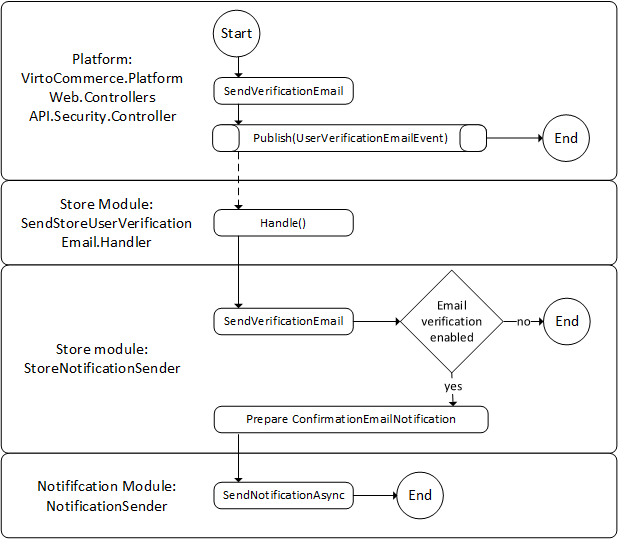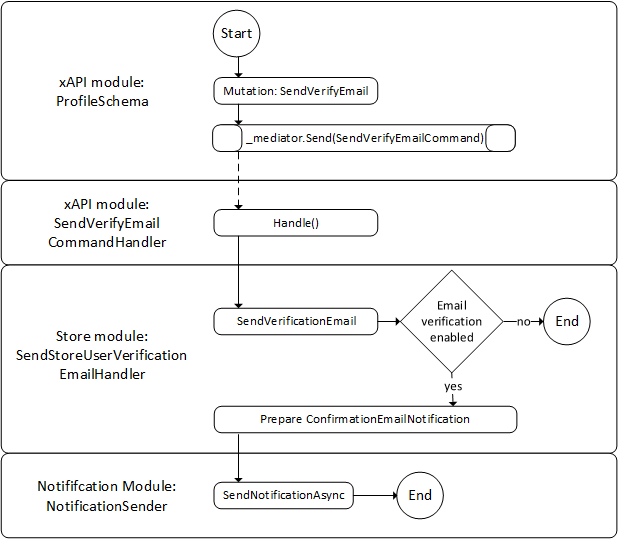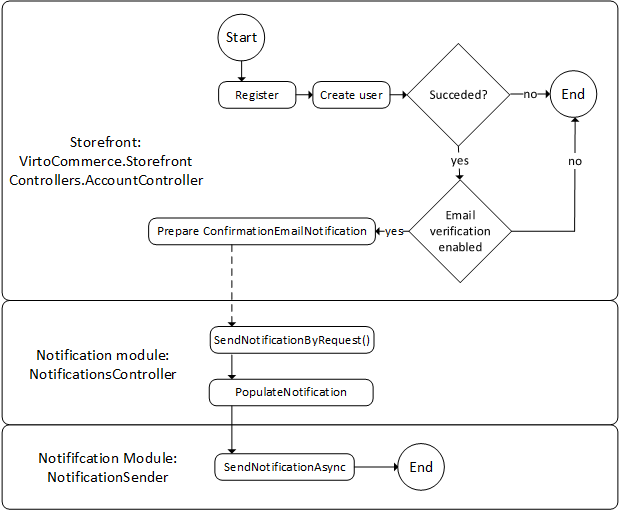Last update:
April 25, 2024
User Email Verification¶
To protect user accounts and prevent fraud, users can be asked to verify and confirm their identity via email. This feature, known as user email verification, can be activated or deactivated. The default setting is off.
Users can verify their email address by clicking a verification link sent to their email address. Verification emails can be sent in the following scenarios:
- Administrator clicks Verify email in the Platform UI (
users/{userId}/sendVerificationEmailendpoint requested). - Administrator calls the
users/{userId}/sendVerificationEmailendpoint. - New user is created in xAPI.
- New user registers in the Storefront UI.
Email Verification in Platform API¶

- A SendVerificationEmail endpoint is activated. It publishes
UserVerificationEmailEventviaIEventPublisher.Publish(). UserVerificationEmailEventevent is received in VirtoCommerce.StoreModule.- The received
ApplicationUseris passed toIStoreNotificationSender.SendUserEmailVerificationAsync()(as a background job). - If e-mail verification is not enabled for the particular store, stop processing and exit.
ConfirmationEmailNotificationnotification template is retrieved and filled.- Notification is passed to
INotificationSender.SendNotificationAsync()for dispatching.
Email Verification in xAPI¶

- A sendVerifyEmail mutation is activated. It creates and publishes
SendVerifyEmailCommandviaIMediator.Send(). SendVerifyEmailCommandcommand is received inSendVerifyEmailCommandHandler.- The associated
ApplicationUseris retrieved and passed toIStoreNotificationSender.SendUserEmailVerificationAsync(). - The processing is requested in
SendUserEmailVerificationAsync()as described in the scenario above.
Alternative Scenario¶
- A createUser mutation is activated. It creates and publishes
CreateUserCommandviaIMediator.Send(). CreateUserCommandcommand is received inSendVerifyEmailCommandHandler.- The newly created user is retrieved and passed to
IStoreNotificationSender.SendUserEmailVerificationAsync(). - The processing is requested in
SendUserEmailVerificationAsync()as described in the scenario above.
Email Verification in Storefront Kit¶
The Storefront kit is an example of Platform API clients.

- A Register endpoint activated in
AccountController. A new user is created (via Virto Platform API). - If e-mail verification is not enabled for the particular store, stop processing and exit.
EmailConfirmationNotificationnotification is created and filled.- The notification is dispatched via
SendNotificationByRequestendpoint (Notifications module).